The Salton Sea is Dying and I’m Trying to Care
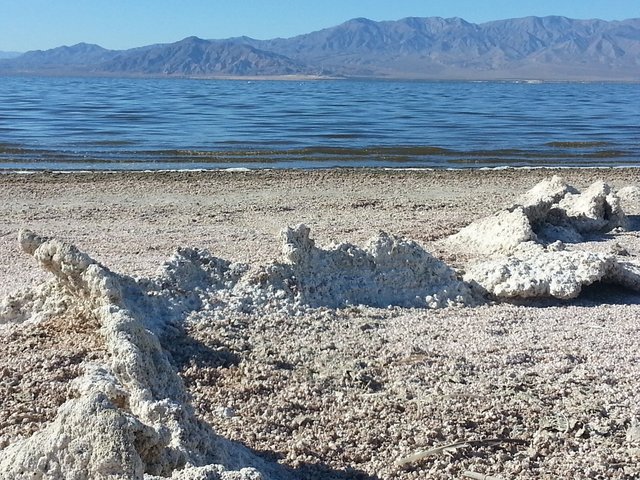
Recently, I passed through Palm Springs, California, and had a chance to visit the Salton Sea. Located in the extreme southeastern corner of the state, the Salton Sea is a vast body of water that covers 350 square miles (906 sq. kilometers). Underneath it lies the San Andreas Fault, California’s longest earthquake fault.
The Salton Sea should not exist. It was created by humans, as the result of an accident. What kind of “accident” creates a lake that is 35 miles (56km) by 15 miles (24 km) in size? Some engineers didn’t do their job very well. More than 100 years ago, Colorado River water was being diverted to irrigate nearby agriculture. And in 1905, the river broke through a poorly-built irrigation canal and flooded this valley.
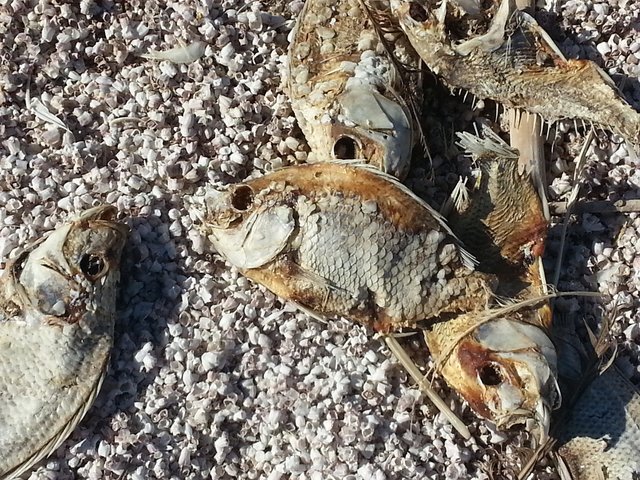
Photo: Dead fish on the receding shoreline. Notice that the "sand" is mostly barnacle shells. Photo by author.
The Salton Sea is saltier than the Pacific Ocean. And it’s getting saltier every day. Soon, the lake will become a death zone, since no birds, fish, or shellfish will be able to live there.
Ironically, This Was an Ancient Seabed
If the Salton Sea was created from river water, then why is it so salty? There are a couple of reasons. First, when ocean levels were higher, the Gulf of California extended much further north. For three million years, up until the Pleistocene, the valley was flooded by the Colorado River delta and estuary. When ocean levels receded, and the valley dried out, there were plenty of salts in the soils here. Until about 1500 A.D., a remnant body of water called Lake Cahuilla covered much of this same spot.
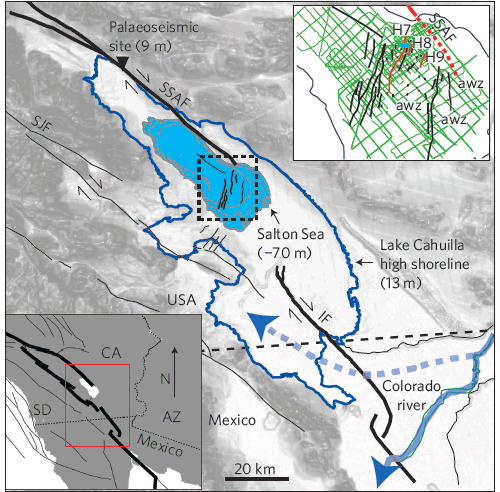
Image: This map shows the present-day Salton Sea and the outlines of historic Lake Cahuilla. The San Andreas Earthquake Fault is the thick black line. Source: KQED.
Second, agriculture in the neighboring Coachella and Imperial Valleys has created some salty runoff. When farmers irrigate their crops, they have to use enough water to flush out the salts. So some of those salts, along with agricultural fertilizers and pesticides, have run into the Salton Sea.
The sea is continuing to get saltier, partly since some freshwater inflows now get diverted for other purposes. In the 1950s, the Salton Sea was less salty than the Pacific Ocean. Now it is up to 50% saltier than the ocean. In the coming decades, the salinity will be so concentrated that nothing will be able to live in the Salton Sea.
Most Aquatic Life Was Introduced From Elsewhere
Most aquatic species in the Salton Sea have been introduced from elsewhere. The most common type of fish is tilapia, which is known for being very adaptable, and has managed to adapt to the extreme salinity here. There are barnacles in the lake also. These crusty arthropods are related to crabs and lobsters, and they are the white or grey crustaceans that usually grow on the bottom of boats and on whales. They hitched a ride to the Salton Sea on someone’s boat many decades ago, adapted to life here, and have spread all over the Salton Sea since then.
To say that the barnacles spread is an understatement; they took over the Salton Sea. There are so many barnacles that entire beach areas are made up of dead barnacles. From a distance, they look like pebbles or rough sand, but when you walk across these beaches, they feel very unique. You are walking on millions of dead barnacle shells with a few fish bones.
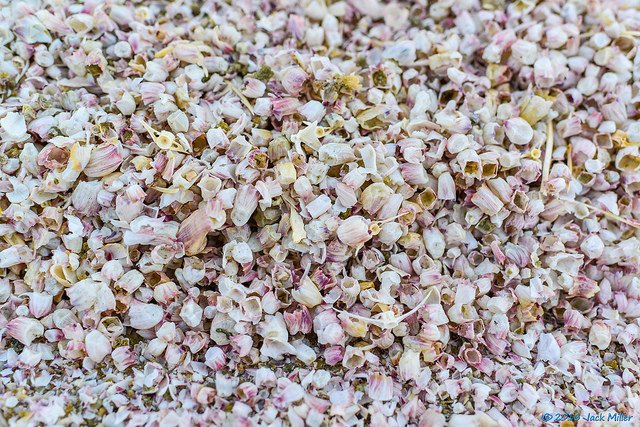
Photo: Creative Commons via Flickr by Jack Miller.
So Why Should I Care If the Salton Sea Dies?
The lake was created accidentally and most of the critters in the water are not native species. So why should we care if the water dries up and leaves behind nothing but salty brine?
There is one interest group that I have not mentioned yet and that’s the birds. Many sensitive bird species have come to depend on the lake as a habitat or as a seasonal stopover on their migration paths. There are more than 400 species of birds that visit the lake annually. These include various kinds of pelicans, storks, bitterns, ibis, grebes, terns, cormorants, and many more.
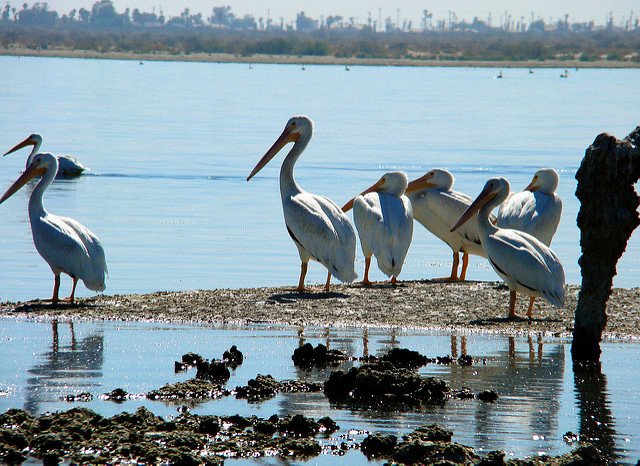
Photo: Creative Commons via Flickr by SoCalTimes.
Amid the havoc that humans have wreaked on the natural environment, the Salton Sea has become an important refuge for many of these birds. In fact, it’s something of a last resort for many of them. The Colorado River is heavily dammed now, so the wetlands around it have been reduced to about 5% of what once existed along its banks. North of the Salton Sea, the Sacramento and San Joaquin Rivers do not flood annually to create wetland areas like they did in times past, while other bodies of water like Owens Lake have been drained for human use.
Rivers and streams have been damned. Wetlands have been drained or choked off. Fresh water sources like lakes have been diverted to support agriculture and thirsty cities. Urban development has overtaken natural habitat.
In addition to being a home for some year-round residents, the Salton Sea is one of the only places migrating birds have left to stop and refuel. It is considered a critical part of the Pacific Flyway for migrating fowl. That means that birds from Alaska to Central America depend on this body of water for their survival.
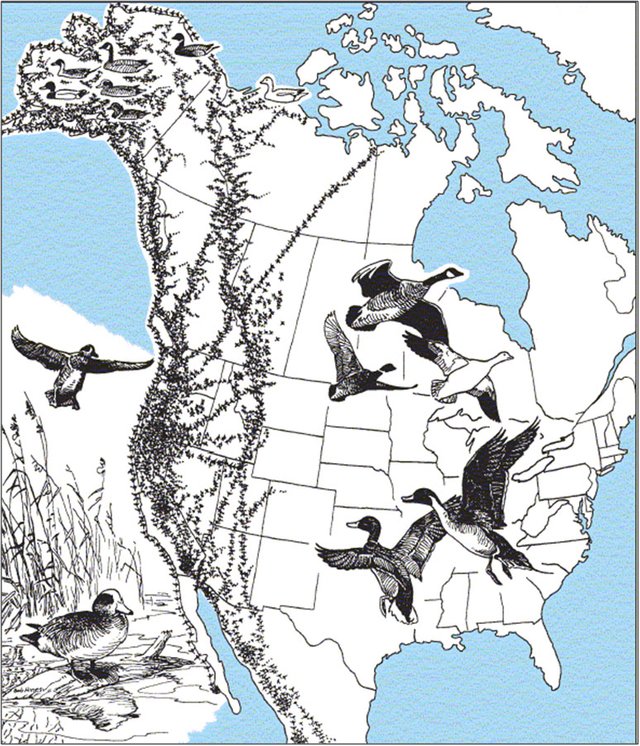
Image: Public Domain, Washington Department of Fish & Wildlife.
Should we take their needs into account? And what about the people who live in this region? When I left the Salton Sea, after visiting it, I was not sure how I felt about protecting it. The place is odd and I’m sure the money it would take to restore the Salton Sea could be put to good use elsewhere.
But the more I have learned about its importance, the more believe this lake is worth saving. In the end, I do care, if only because of the birds. I am not bothered if others have different views.
Desalinating and restoring the Salton Sea will be expensive. There are several proposals for removing some of the salts or perhaps flushing them out to sea somehow. Everything I have read suggests that restoration is quite possible, though not cheap. It probably will not happen at the sea’s current size, but the Salton Sea could be maintained more easily if it were somewhat smaller. That may be the most sustainable option in the future.
References:
Thumbnail: Photo by author.
Salton Sea Wikipedia: https://en.wikipedia.org/wiki/Salton_Sea
Info from Desert USA: http://www.desertusa.com/salton/salton.html
The Downright Weird Salton Sea: http://ngm.nationalgeographic.com/ngm/0502/feature5/
Salton Sea’s Wildlife Habitat is Crucial: https://www.kcet.org/redefine/the-salton-sea-is-crucial-wildlife-habitat-heres-why
Restoration: http://saltonsea.ca.gov/
The more I learn about the destruction wrought by humans on this planet, the more I come to realise we are a parasite.
We are a particularly destructive and non-aware parasite. En masse, as a species, we don't realise (or care) how much of the planet we destroy.
We also don't seem to understand that there is no 'Planet B' and once the planet on which we depend is beyond saving, as a species, we're doomed.
I used to have that opinion as well until relatively recently. Graham Hancock's most recent work (Magicians of the Gods) has confirmed my growing awareness that what we would consider "catastrophic changes" in climate and geology have been recurring events in the planet's history. "Magicians of the Gods" is well worth a read.
Be part of the solution. Stop breathing.
After you :)
I'm sure it's possible for people to live in better harmony with our surroundings, but we have a long way to go if we want to live sustainably.
SUCH a long way, unfortunately.
More unfortunately, so many don't want to try.
seriously right? I mean what do people have to lose by going green? Nothing!!
Completely agree with you Michelle.
Cheers @simonjay
Do anything you want, just don't use my (tax) money to do it with.
Crowdsource or ask for donations or something. Have a bake sale.
Will you buy some of the cookies?
depends....I have a weakness for chocolate chip with coconut and pecan's in them.
BUT...I have a serious aversion to Taxifornia.
I've been to the Salton Sea by the way...nothing special about it really. It looks a lot like truth or consequences New Mexico on the Rio Grande...except not as pretty.
That was my impression, too. Mostly underwhelmed. But the birds felt differently.
The term 'bird brain' is used for a reason. In a manner of speaking the birds are an invasive species (they weren't there before, they're there now, they invaded). I've never understood why nasty birds (repeat NASTY) are afforded such status.
Note...birds are supposedly the direct descendents of dinosaurs. That would mean that they managed to survive for over sixty million years with no help from us. I'd say don't worry about the birds. If they die (not likely) they die.
MMM. that is a good choice of cookie.
I'd buy!
the same thing is happening to Urmia lake which is located in Iran, it size is something about 140 km (length) and 55 Km(width) . it is one of the biggest lakes in the world but it has shrunk something about 10 % in last couple of years. it is effecting all sort of creatures. if it keeps shrinking as the same pace , soon we wont even remember that there was even a lake once
the funny thing is Iran's government is aware of the situation but all they do is telling how concerned they are that they are loosing such national asset and actually doing nothing
here you can see how fast it is shrinking :/
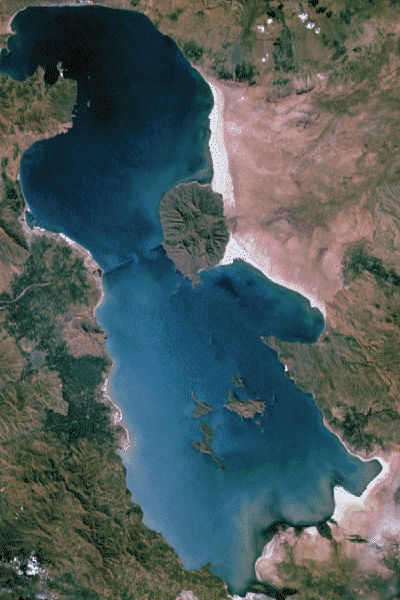
Wow after seeing this image you can really see it, I say save it! upvoted
it is really upseting , such resources have not come out over a night and we should pass them to the nex generation as they were. You now what ? I am gonna write a post about it and see how it will go.maybe some people see it and have a solution for it
Salton Sea is quite a curiosity. It's too late to "save" Salton Sea, the best course of action would be to create a smaller, alternate habitat nearby for the wildlife, whilst letting Salton die. Or, like you say, just preserve a smaller portion of it.
Do check out this beautiful film "The Useless Sea" -
Also - loved GTA V's version of it!
That's neat! Yes, there are alternative ideas that could work. If the scientists agree on what's best, then it's a matter of getting the stakeholders behind one project to generate the right political support and funding. Always a challenge.
Great article again, I really value your dedication to good content and the diversity of your posts. thanks for this one as well. Namaste :)
I am glad that you made this post to educate people and that you also want to save the Salton Sea.
However it is so disappointing that humans can't just honor and respect nature and the earth as a whole.
I am very disturbed by how humans are fine with living their daily lives that DIRECTLY destroy vast amounts of natural environments. Then they decide to spend vast amounts of money of tiny issues that is ONLY a problem because of the way they are living in the first place.....all because its somehow "special".
tack som du delat den här foto
Good Post!!!
I had the pleasure of birding there a few years ago at the Sonny Bono Salton Sea National Wildlife refuge. Fantastic spot for birds and enjoyed every minute of it. Then we went on to visit Slab City. Very interesting place. It's a natural and cultural landmark. Though from what I understand, the current sea was never permanent from it's formation.
Whenever I hear "Salton Sea" I immediately think of this underrated Val Kilmer movie. http://www.imdb.com/title/tt0235737/
I like your approach here where you are on the fence but provide enough evidence to explain why you were pushed to one side of the argument... yet you leave room for someone to disrespectfully disagree. It will be interesting to see if there is a private group that steps up to save it.
Yes, the movie is good. Hanging from one side of the fence...that's me.